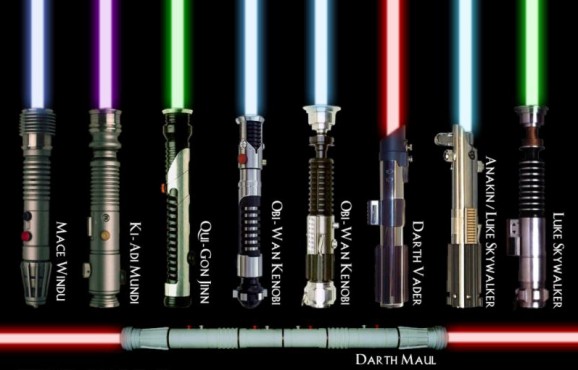Light-Matter Is A Real Thing, Next Step Lightsabers
This article is more than 2 years old
 I love when science shows us that crazy awesome sci-fi inventions aren’t just fantastical imaginings. This latest one takes the cake—or an arm. Light-matter exists. This means that lightsabers are possible, which really don’t make sense: how can light make physical contact with another beam of light? When I playing dueling flashlights, nothing nearly that dramatic happens. And why does the light-blade stop? It should keep going, at least until it hits another surface, no? And Leave it to scientists at MIT and Harvard to vindicate Hollywood.
I love when science shows us that crazy awesome sci-fi inventions aren’t just fantastical imaginings. This latest one takes the cake—or an arm. Light-matter exists. This means that lightsabers are possible, which really don’t make sense: how can light make physical contact with another beam of light? When I playing dueling flashlights, nothing nearly that dramatic happens. And why does the light-blade stop? It should keep going, at least until it hits another surface, no? And Leave it to scientists at MIT and Harvard to vindicate Hollywood.
Scientists have theorized the existence of light-matter, but that was about it. Star Wars fans hoped like hell that it was real, but had to settle for buying the cheap battery-powered imitations to satisfy their wishes. Now, the seeds of creating an actual lightsaber have been sewn—and these won’t be available at Toys R Us.
So how does it work? Light is comprised of photons, which have no measurable mass, and generally don’t hang out with each other, much less stick together. This is why my flashlight duels are somewhat lackluster. The same goes for lasers—if a good guy and bad guy, or father and son were armed with lasers, the fight would be pretty lame.
The trick is getting the photons to bind together into molecules, which is far easier said than done. The team of scientists used a vacuum chamber to cool rubidium atoms down as far as possible—just above absolute zero. Then they fired two photons at the rubidium atoms, expecting the photons to enter and exit the atom cloud individually, as per usual. Instead, the photons exited the cloud as a single molecule.
This happened because of the Rydberg blockade, which holds that when an atom reaches a state of excitement, the atoms around it can’t get reach as agitated a state. So the first photon excited the atoms, but the excitement was short lived—it was over before the second photon could start its party. Ultimately, the photons pushed and pulled on each other as they entered and exited the cloud of atoms, which made them act like a molecule, or a single photon, as the light exited the cloud.
Strangely, making light sabers doesn’t seem to be the scientists’ top priority. They hope that this discovery will prompt breakthroughs in the use of photons in quantum computing. I guess that makes sense, as the light-matter they produced was in a relatively miniscule quantity, far from enough to defeat evil in a duel. Eventually, though, it may be possible to produce entire light crystals. “The physics of what’s happening in these molecules is similar to what we see in the movies,” says physicist Mikhail Lukin.
Scientists still have no explanation for Jar Jar.












